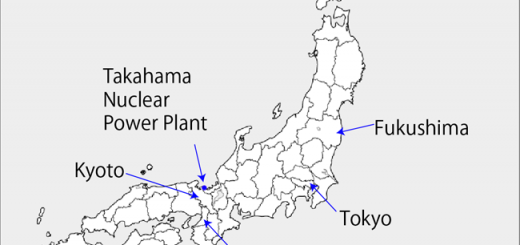CNIC Statement: The Expansion of Subsidies for Restarting NPPs is a Mistake
22 November 2022
The Ministry of Economy, Trade and Industry (METI) revised its regulations for “Infrastructure Development Support Project Grants” at the end of October, doubling the maximum subsidy to prefectures with nuclear power plants (NPPs) that have restarted in April 2022 or later from 500 million yen to 1 billion yen. Furthermore, METI also decided to award a maximum of 500 million yen to prefectures that are adjacent to municipalities that host NPPs. On November 10, Commissioner Hosaka Shin of METI’s Agency for Natural Resources and Energy held online discussions with Governor Hirai Shinji of Tottori Prefecture and Governor Maruyama Tatsuya of Shimane Prefecture to tell them that they would be the recipients of the first round of the newly expanded subsidies.
The “Strengthening Measures Related to NPP Restarts” issued by the GX (Green Transformation) Implementation Council is a ploy to prop-up the subsidy hike that looks at present as if it will end up with no takers.
This modus operandi has been frequently repeated. In 2004, having said that “Since MOX fueled nuclear power is nothing special, there will be no grant increase,” a subsidy of 100 million yen was awarded simply for submission of a Request for Prior Consent by a power company to a municipality, and an additional subsidy was paid if MOX fuel generation actually started. From FY2007, the subsidies related to high-level radioactive waste disposal site selection were given a huge boost, the subsidy for the first-step ‘literature review’ being raised from 210 million yen to 1 billion yen, and for the second-step ‘overview survey’ from 2 billion yen to 7 billion yen.
Not only that, in 2011, in the month following the Fukushima Daiichi Nuclear Power Station accident, an increase in subsidies to municipalities for new-build NPPs were decided. In addition, for existing NPPs, the subsidy-awarding method was altered from a full subsidy grant to a grant amount in accordance with generating performance. The operating rate of shutdown reactors was set at a uniform 81% for the grant, making it hard for the municipality to request a shutdown, and further, in 2016, the standard utilization rate for each reactor was brought down to an upper limit of 68%. This is a mechanism for a large reduction in subsidies if NPPs are not restarted.
A mechanism to add subsidies to municipalities for NPPs that have operated for more than 40 years also began in FY2010.
All of the above are examples of stagnation or failure of policies METI wished to implement and which they are attempting to turn around through the granting of subsidies to the host municipalities. It is quite obvious that this is simply in opposition to the trend of public opinion. It is a mistaken technique that takes advantage of municipalities that are facing financial difficulties and should be revoked.

